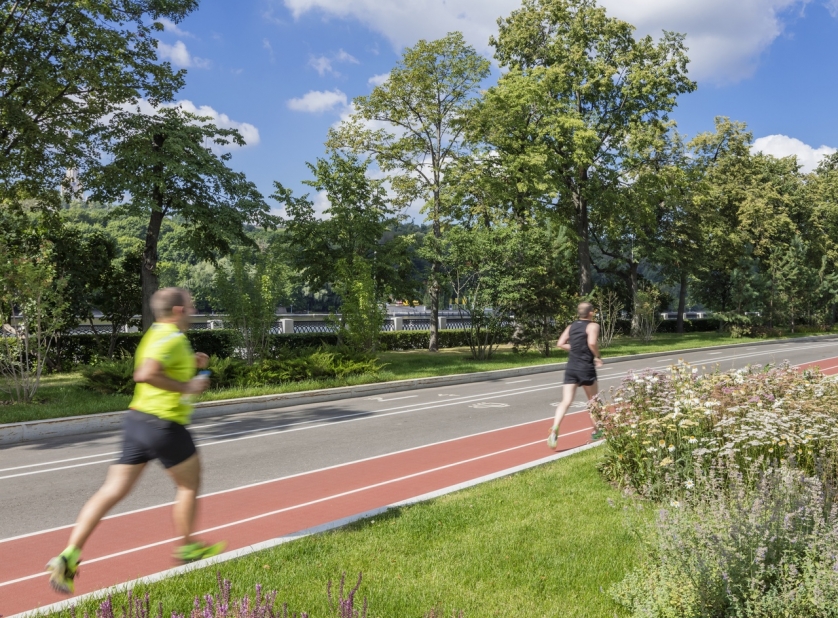The Transport of the Pandemic Era: Will Cities Switch to Bicycles

A sedentary lifestyle, poor ecology, and stress are the problems of a modern city leading to the weakening of immunity and the development of diseases in its residents. A well-planned urban environment helps neutralize these negative phenomena, but how can it be designed? Why have so many cities started laying kilometers of bicycle lanes after the lockdown? Jeff Speck, the author of “the best-selling book on urbanism of the last decade”, and Lucy Saunders, the developer of the Healthy Streets concept implemented in London, will talk about what else can be done to increase the immunity and stress resistance of urban residents at the session “Active City: an Environment That Stimulates Healthy Lifestyle” as part of the Creative Environment and Urbanism Section.
Movement and, experts add, clean air is life. This is why the de-motorization of cities and the trend towards the so-called natural movement, when people do not need to purposefully go to the gym or go to the countryside to ride a bike, walk their 10,000 steps, or interact with nature, and the city itself invites residents to natural physical activity with pedestrian and bike lanes and green zones, are areas of the Urban Health concept that cities were following in their development or at least announced the plans for it before the pandemic had swept the planet. The lockdown has amplified these trends. In many cities around the world, a bicycle as an individual means of transportation is presently called the transport of the epidemic era. The Colombian city of Bogotá, where the New Ciclovia Program, as part of which kilometers of bike lanes have been created and 126 km of streets have been closed for cars on Sundays while over 1.7 million people have gone out for walking, running, rollerblading, and cycling, has been functioning for almost 20 years, decided to significantly expand this program and add more than 20 km of streets to it along with, to top it off, opening the traffic for cyclists and pedestrians not only on weekends but also on weekdays. Liverpool, Paris, and New York have joined the process of switching to bicycles during the pandemic. Pedestrian Preference has long been announced as one of Copenhagen’s premier programs. Jeff Speck, American urbanist and sociologist, head of the Speck & Associates Consulting Company, co-author of the book Suburban Nation already dubbed by The Wall Street Journal as “the urbanist’s Bible” and the author of Walkable City marked as the top-selling publication on urban science of the past decade, will talk about what other measures can be taken to improve the health of the population and how not to make mistakes along the way at the session “Active City: an Environment That Stimulates a Healthy Lifestyle”. His TED talks and YouTube videos have become hits with over four million views.
“In terms of health, prevention is far more effective than cure, and the quality of the environment we create is key to preventing injury, illness, and death. When it comes to heart disease, cancer, diabetes, asthma, stress, social isolation, the effects of heat and car accidents, it is how we shape our community that can help us stay healthy, make us sick, or lead to death. It is a great honor for me to address Russian and international audiences on this topic,” Mr. Speck noted.
The session will also be attended by Lucy Saunders, public health specialist, transport planner, and author of the Healthy Streets approach aimed at increasing the physical activity of urban residents and reducing disease rates, which is at the heart of London’s transport strategy.
“The world’s population is urbanizing, which is why cities around the world must strive to ensure that more people live happier, healthier lives. To do this, we must focus on public spaces: making sure that the air is clean, that they are not too noisy, and that people can do sports, communicate, move around easily, cheaply and quickly, have the opportunity for cultural exchange and socialization,” says Lucy Saunders.
Among other invited participants of the session are: Sergey Kuznetsov, Chief Architect of the city of Moscow, curator of the Creative Environment and Urbanism Section, Marina Lepeshkina, General Director of RTDA, Nikita Rumyantsev, Head of the Analytics Center of the Autonomous Non-Commercial Organization “Moscow Urban Forum”, Yulia Urozhaeva, First Deputy Head of the Deputy Mayor’s Office for Social Development, and Artem Gerasimenko, Healthy Cities Foundation. Event date and time: November 12, 2020, 14.00–15.30
Registration for the participants of the Professional Flow of the Forum will be open until October 26 at culturalforum.ru. The program of the section is currently being put together and is subject to change: watch the news.



